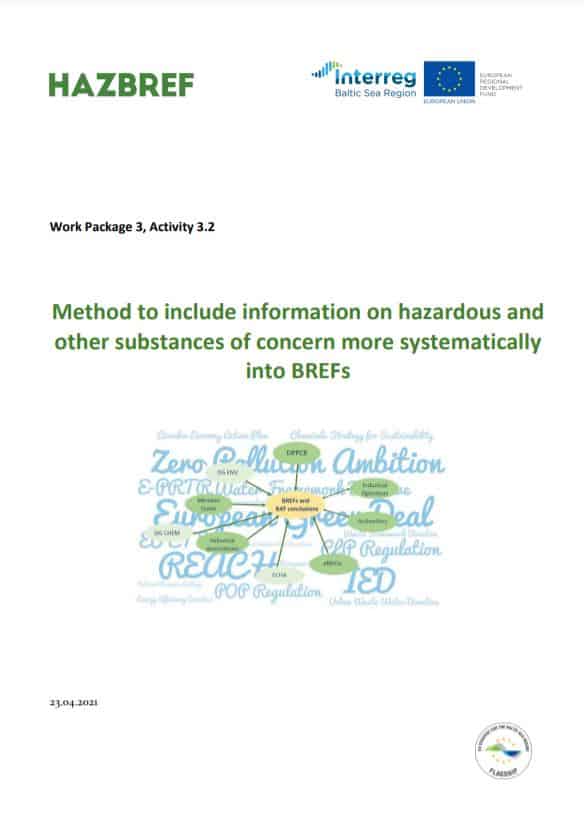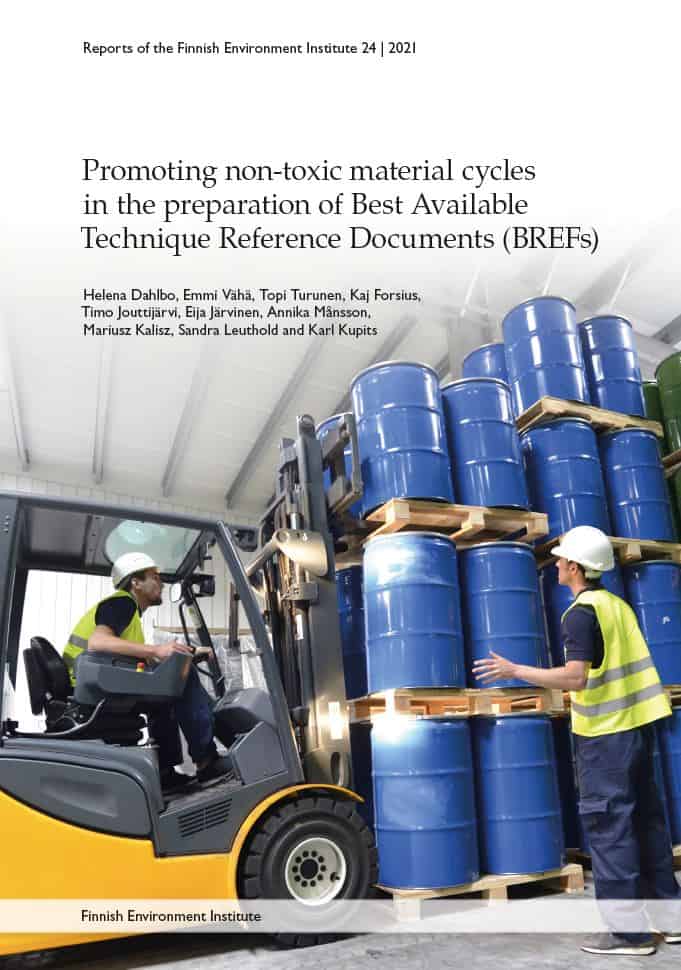HAZBREF
The Industrial Emissions Directive is the main instrument on the EU level to control hazardous substances that are released from industrial sites. However, its reference documents, or BREFs, currently lack specific information on certain hazardous substances.
The project aimed at closing this knowledge gap so that industry and authorities could manage hazardous substances being released into the Baltic Sea better. The project strived for narrowing the gap experienced by both operators of installations and environmental authorities. Both target groups do not always know which substances are environmentally most relevant to address and by which management measures the releases can be reduced.
Furthermore, the project sought to enhance the institutional capacity of environmental permitting and supervision authorities as well as industrial installations on use and risk management of hazardous chemicals in industries in the participating countries Finland, Sweden, Germany, Poland and Estonia and even broader in the Baltic Sea region and throughout Europe.
Budgets
in numbers
-
1.99MillionTotal
-
1.53MillionErdf
-
0.00MillionEni + Russia
-
0.00MillionNorway
Achievements
Timely recommendations delivered
Against the backdrop of recent policy initiatives by the European Commission and the review of the Industrial Emissions Directive (IED), the recommendations and findings of the project came in a timely manner. Project recommendations and results have been well received by EU Member State representatives and non-governmental organisations (NGOs) contributing to the ongoing EU IED review work. HAZBREF results have been useful during the review of BREFs related to the use and release of chemicals. For example, the review of BREF for the textile sector is the first in which recommendations and findings of HAZBREF have been taken up in Best Available Technique conclusions. Once they are published, the implementation of these conclusions will be legally binding throughout the EU, including coastal Member States that discharge into the Baltic Sea. This will result in a real improvement in the quality of the Baltic Sea.
Benefits of strengthened cooperation
HAZBREF’s recommendation to use all available information on hazardous substances and chemicals in the BREF processes was taken up and led to improving cooperation between the European Integrated Pollution Prevention and Control Bureau (EIPPCB), establishing the BREFs, with the European Integrated Chemicals Agency (ECHA).
Sectoral guidance provided
Additionally, the project issued sectoral guidance based on case studies, interviews with authorities, expert judgement, and input from stakeholders. The guidance includes good practices in chemical management for installations and involved authorities. Based on this, measures recommended by HAZBREF to curb the pollution by hazardous substances have been taken-up by HELCOM in their review of the Baltic Sea Action Plan. The positive impact of the HAZBREF project could also continue beyond the Baltic Sea and EU borders. Its results have been presented at the OECD and have been integrated into its work on circular economy.
The Interreg project HAZBREF used EUR 1.96 mill from the European Union to improve existing tools to control hazardous substances released from industrial sites. The project covered such industries as the textile industry, chemical industry and ferrous metals processing by improving the quality of the information on best available techniques in hazardous substances and chemicals management. Thus the project contributed to the prevention of hazardous substances and chemicals released into the Baltic Sea.
Outputs
Strengthening chemicals management in Best Available Techniques Reference Documents

HAZBREF circular economy report

Project Stories
Partners
Finnish Environment Institute
- TownHelsinki
- RegionHelsinki-Uusimaa
- CountryFinland
- RepresentativeKaj Forsius
- Phone
- E-Mail
- Web
Institute for Ecology of Industrial Areas
- TownKatowice
- RegionGliwicki
- CountryPoland
- RepresentativeJanusz Krupanek
- Phone
- E-Mail
- Web
German Environment Agency
- TownDessau-Rosslau
- RegionDessau-Roßlau, Kreisfreie Stadt
- CountryGermany
- RepresentativeMichael Suhr
- Phone
- E-Mail
- Web
Swedish Environmental Protection Agency
- TownStockholm
- RegionStockholms län
- CountrySweden
- RepresentativeAnnika Månsson
- Phone
- E-Mail
- Web
Estonian Environmental Research Centre
- TownTallinn
- RegionKirde-Eesti
- CountryEstonia
- RepresentativeKarl Kupits
- Phone
- E-Mail
- Web
-
Project managerKaj ForsiusFinnish Environment Institute
-
Legal representativeJyri SeppäläFinnish Environment Institute
-
Financial managerMaria KoskiFinnish Environment Institute (SYKE)
-
Communication managerEija JärvinenFinnish Environment Institute (SYKE)



